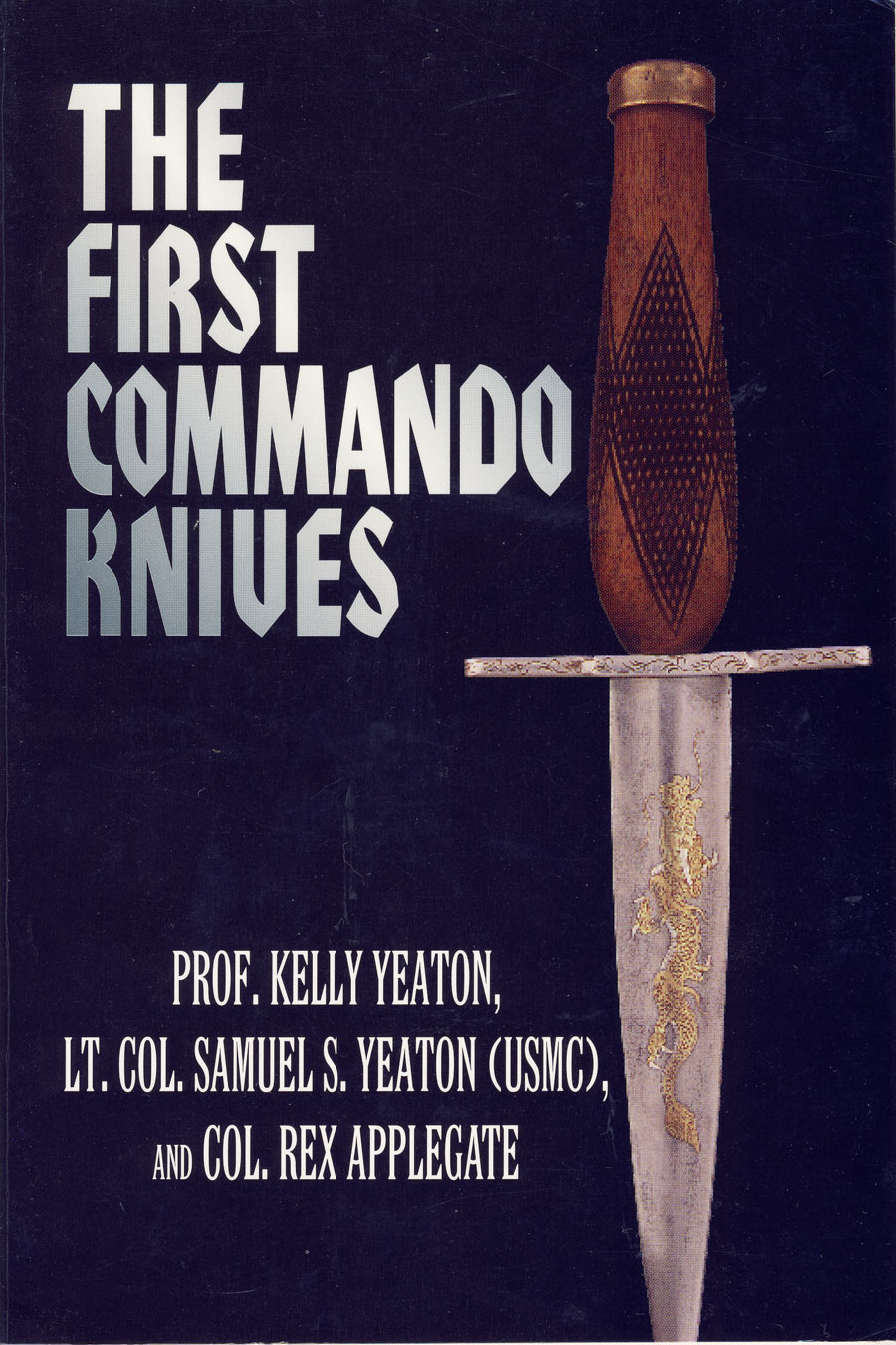|
It was here in Shanghai 1931
they started to develop a new type of knives. The knives were made at the
Shanghai Municipal Police (SMP) Armoury. It was under the supervision of a
former White Russian Colonel, Nicholas Solntseff, his staff made knives on a
custom basis for U.S.M.C. officers and others.
A young US Marines officer - Second Lt. Samuel Sylvester Yeaton (1907 -
1979) was also involved in the composition of Shanghai knife. His
correspondence with his family gives good information about these early
activities. His brother Prof. Kelly Yeaton has written a book
about this called
The First Commando Knives
This is an excellent book and it describes the only
true Shanghai knives.

Outside Prof. Kelly Yeaton's book you can see a true
Shanghai Fighting knife!
In this book you can see some examples of the very rare
original Shanghai knives. It describes the life in
Shanghai from 1932 onwards. It is a very nice book and on the outside you
can see the knife of the Yeaton brothers.
The knife was carried in a
scabbard hidden but easily accessible. This scabbard was a very important
part of the knife system.
Nobody knows how many custom
knives were made; the number of known examples is extremely small.
Most Shanghai knives
you will find are fakes or copies!
Most
serious collectors nowadays agree too that the only true Shanghai knives are
those pictured in Prof. Kelly Yeaton’s book. Unfortunately there is some
very well known literature in English from a very well known author, which
is not reliable. The pictures shown in that book are fake Shanghai knives!
Dr.
Windrum believed in these knives. Let us make some criticism of his sources.
If we analyse his writings we will soon become aware of that many of these
knives came from the same source. This source had a very strange ability to
"uncover" or “find” all sorts of odd prototypes and experimental knives
owned by Fairbairn.
All known Shanghai knives with reference to Dr. William
Windrum are fakes,
according to well known experts!
Like in many fields of collecting, the
fakers can completely mess things up!
NEVER BUY A SHANGHAI KNIFE
WITHOUT PROVINENCE!
As you can see the so called Shanghai knives shown
below here are all fakes and differ from the originals shown in Yeaton's
excellent book in terms of materials and some design features.
|